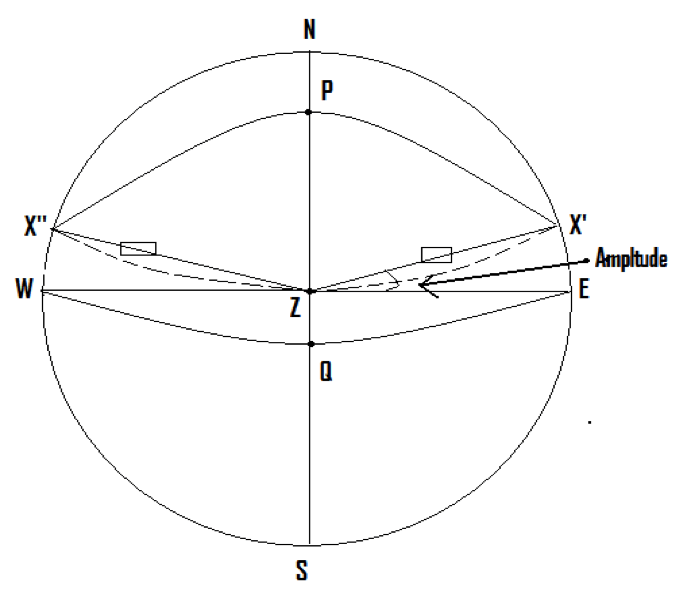The Amplitude of a body is the angle at the observer’s zenith or the arc of his rational horizon contained between the observer’s prime vertical and the vertical circle through the body, at theoretical rising or setting.When observing the amplitude of a body, its centre should be on the rational horizon, that is, its true altitude should be exactly 0° which implies that its zenith distance will be exactly 90°. Amplitude is measured from the observer’s prime vertical, as shown in the figure, and not from the observer’s meridian.Amplitude is therefore named from … [Read more...]
